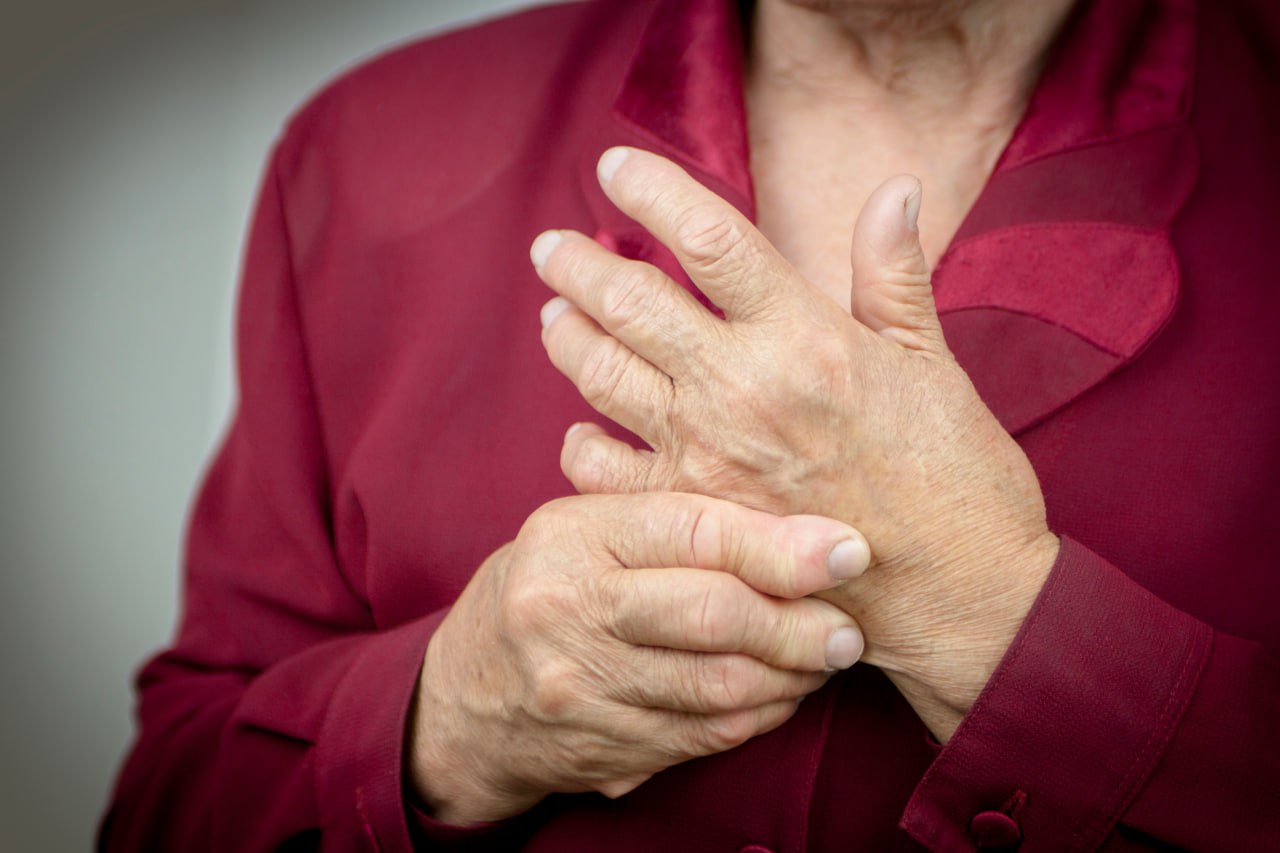A warm joint can feel like a heat sensation from the joint itself, often accompanied by swelling, redness, and pain. If you also have symptoms like fever or chills, it may indicate an underlying infection.
No matter what other symptoms you experience, it is essential to get a diagnosis from a doctor to identify any underlying medical issues, such as gout, and receive the appropriate treatment.
Why Do Joints Feel Warm?
Warmth in joints can happen anywhere in the body but is most common in larger joints like the knees, hips, and shoulders. Common causes include:
- Inflammation: When the immune system responds to an injury or infection in the joint, it increases blood flow to the area, causing heat, swelling, and pain.
- Infection: Bacterial, fungal, or viral infections in the joint can cause heat, swelling, and fever. Seek immediate medical attention to avoid severe complications.
- Injury: Sprains, strains, or fractures can increase blood flow to the injured area, resulting in warmth.
Medical Conditions Associated With Warm Joints
Several medical conditions can cause warm joints, including:
- Gout: A type of arthritis caused by uric acid buildup in the joints, leading to intense pain, inflammation, and warmth. It usually starts in the big toe but can affect other joints. Management includes lifestyle changes and medications to reduce uric acid levels.
- Rheumatoid arthritis: An autoimmune disorder that attacks the joint lining, causing inflammation, pain, redness, and heat, starting in smaller joints but potentially affecting larger ones. Treatment aims to reduce inflammation and preserve joint function through medications and sometimes surgery.
- Osteoarthritis: A degenerative joint disorder where cartilage breakdown leads to inflammation, pain, swelling, and warmth. Management focuses on pain relief, improving joint function, and slowing down the progression of the disease with medications, physical therapy, and lifestyle changes.
- Systemic lupus erythematosus (SLE): An autoimmune disorder affecting various body parts, including joints, causing pain, warmth, swelling, and stiffness. Treatment involves medications to control symptoms and prevent flare-ups, along with lifestyle modifications.
- Ankylosing spondylitis: An inflammatory disorder affecting the spine, leading to inflammation, stiffness, pain, and warmth. Management includes medications, physical therapy, and exercises to improve posture and flexibility.
- Bursitis: Inflammation of the bursae (fluid sacs cushioning joints), often due to pressure or trauma, resulting in warmth and swelling. Treatment involves rest, ice application, medications, and sometimes physical therapy to reduce inflammation and pain.
- Tendonitis: Inflammation of a tendon, often from injury, causing warmth in affected joints like knees or wrists. Management includes rest, ice application, medications, and physical therapy to reduce inflammation and promote healing.
When Is Joint Warmth A Concern?
If you notice sudden and fleeting warmth in your joint, it might not be alarming. Yet, if accompanied by additional symptoms, seeking medical advice is crucial. Watch for these signs that could indicate a more serious issue:
- Broken skin: Cuts or scrapes near the joint could signal a joint injury.
- Chills: Often accompanied by fever and fatigue, chills may indicate infection.
- Sudden onset of pain: Sharp, sudden pain along with heat and swelling could be indicative of conditions such as arthritis or bursitis.
- Fever: A fever suggests the body is combating an infection, often accompanied by fatigue and loss of appetite.
- Intense pain: Severe pain may indicate serious conditions like infection, arthritis, or significant injuries such as fractures or dislocations.
- Sudden immobility: Difficulty moving the joint or decreased range of motion might indicate an underlying issue such as arthritis.
If you experience any of these symptoms, consulting with a healthcare professional is advisable to determine the appropriate course of action.
Diagnosing The Underlying Causes
When you seek medical treatment for a warm joint, a doctor will first take your medical history and conduct a physical examination of the affected joint, checking for swelling, redness, tenderness, heat, and range of motion. They may also order tests such as:
- X-ray or MRI: These imaging tests provide detailed images of the joint, helping identify fractures, tumors, or other issues.
- Joint fluid analysis: This involves taking a fluid sample from your joint to check for infections or other problems.
Accurate diagnosis is essential for effective treatment and management of the underlying causes of warm joints.
Managing Warm Joints With Conventional Medicine
NextPain Care's Approach to Joint Warmth Discomfort
We understand that living with chronic pain, including unusual facial flushing, or sweating, can be incredibly challenging. At NextPain Care, our multidisciplinary approach tailors effective treatment plans to each patient’s unique needs.
We start with the least invasive treatments, such as physical therapy and lifestyle modifications, progressing to medications and targeted treatments if necessary. For persistent, severe pain, advanced procedures like spinal cord stimulation and sacroiliac joint fusion may be utilized.
Warmth Joint Pain-Causing Conditions Treated By NextPain Care

Rheumatoid Arthritis Pain Treatment
Rheumatoid arthritis can be a debilitating and painful condition that causes swelling, joint damage, and immobility. NextPain Care offers a comprehensive approach to treating the pain associated with rheumatoid arthritis and the condition itself. We aim to...
Improve Joint Health For Better Overall Well-being
Experiencing warmth in a joint often signals an underlying issue that needs immediate attention. Seeking comprehensive care for chronic warm joint pain is essential to address the root cause of the symptom.
With the right approach, you can effectively manage your pain and improve your joint health. Maintaining a healthy weight through regular physical activity and a balanced diet can alleviate strain on your joints, reducing inflammation and discomfort. Ensuring proper alignment and posture promotes joint health, preventing uneven wear and tear that leads to chronic pain.
Addressing any underlying medical conditions contributing to joint warmth is also crucial. By taking a proactive and holistic approach, you can enhance your joint health and significantly improve your quality of life. Make the choice today to prioritize your joint health and enjoy a future free from chronic pain.
Seeking relief for your warm joints?
